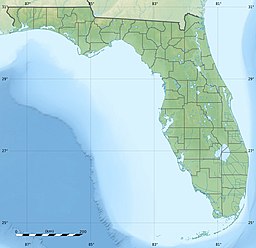
The University of Florida is a public land-grant research university in Gainesville, Florida. It is a senior member of the State University System of Florida, traces its origins to 1853, and has operated continuously on its Gainesville campus since September 1906.

Alachua County is a county in the north central portion of the U.S. state of Florida. As of the 2020 census, the population was 278,468. The county seat is Gainesville, the home of the University of Florida since 1906, when the campus opened with 106 students.

Gainesville is the county seat of Alachua County, Florida, and the largest city in North Central Florida, with a population of 141,085 in 2020. It is the principal city of the Gainesville metropolitan area, which had a population of 339,247 in 2020.

Hawthorne is a city in Alachua County, Florida, United States, incorporated in 1881. Indigenous peoples of the Americas had been living in the area since around 100 CE; Hawthorne grew around their trading trails. Throughout its history, Hawthorne has been known for its agriculture, railroad, and rural lifestyle. Hawthorne's population was 1,478 at the 2020 census, with an area of 7.38 sq mi (19.1 km2).
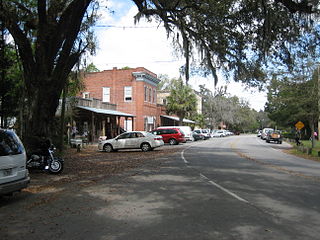
Micanopy, originally Wanton, is a town in Alachua County, Florida, United States, located south of Gainesville. The population as of the 2010 census was 600. The oldest community in the interior of Florida that has been continually inhabited, it has a downtown that is designated as the Micanopy Historic District and listed on the National Register of Historic Places. It contains a number of antique stores, as well as several restaurants, a library, firehouse, and post office. The town's slogan is "The Town that Time Forgot."
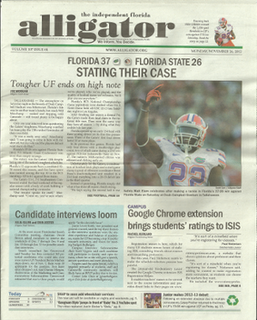
The Independent Florida Alligator is the daily student newspaper of the University of Florida. The Alligator is one of the largest student-run newspapers in the United States, with a daily circulation of 35,000 and readership of more than 52,000. It is an affiliate of UWIRE, which distributes and promotes its content to their network.

Paynes Prairie Preserve State Park is a Florida State Park, encompassing a 21,000-acre (85 km2) savanna in Alachua County, Florida lying between Micanopy and Gainesville. It is also a U.S. National Natural Landmark. It is crossed by both I-75 and U.S. 441. It is in the center of the Paynes Prairie Basin. The basin's primary source of drainage is Alachua Sink. During occasional wet periods, the basin will become full. A notable period occurred from 1871 to 1891 when the Alachua Sink was temporarily blocked. During this period, shallow draft steamboats were a frequent sight on Alachua Lake in the center of the prairie. The region was also historically known as the Alachua Savannah. Its drainage has been modified by several canals. Since 1927, Camps Canal has linked the basin to the River Styx which leads to Orange Lake and eventually the Atlantic Ocean through the St. Johns River. That reduced the basins water intake by half. Additional changes to the prairie's environment have been detrimental to its hydrology. In 1970, the state of Florida acquired the land and has been in the process of restoring the environment to a more natural condition ever since.

The 74-mile-long (119 km) Ocklawaha River flows north from central Florida until it joins the St. Johns River near Palatka. Its name is a corruption of ak-lowahe, Creek for "muddy".

Marjorie Kinnan Rawlings Historic State Park is a Florida State Park and historic site located on the former homestead of Pulitzer Prize-winning Florida author Marjorie Kinnan Rawlings (1896-1953). A National Historic Landmark, it is located in Cross Creek, Florida, between Ocala and Gainesville at 18700 South County Road 325.

Santa Fe College is a public college based in Gainesville, Florida, with satellite campuses in Alachua and Bradford counties. It is part of the Florida College System. It was established in 1965 as Santa Fe Junior College by the Florida Legislature and began offering classes in September 1966. As of Fall 2020, the school had an enrollment of 12,607 students, and offers associate and baccalaureate degree programs.
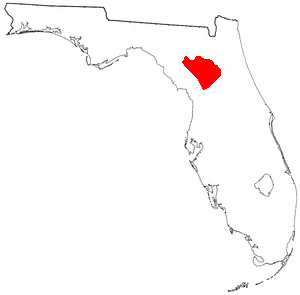
The Alachua culture is a Late Woodland Southeast period archaeological culture in north-central Florida, dating from around 600 to 1700. It is found in an area roughly corresponding to present-day Alachua County, the northern half of Marion County and the western part of Putnam County. It was preceded by the Cades Pond culture, which inhabited approximately the same area.

State Road 26 is a 62.172-mile-long (100.056 km) east–west route across North Central Florida.

Cooperative Living Organization (CLO), formerly Collegiate Living Organization, in Gainesville, Florida, is one of the oldest continuously operating independent student-governed cooperative living organizations in the United States. The 89-year-old organization has provided over 2000 financially disadvantaged students an opportunity for a University of Florida education while providing experience in independent and socially responsible living by pooled resources and self-governance.
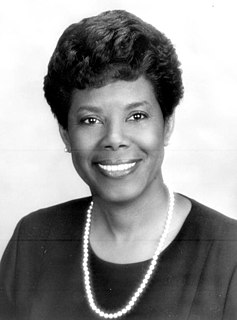
Cynthia Moore Chestnut is an American Democratic politician who served on the Gainesville, Florida City Commission from 1987 to 1989 and as a member of the Florida House of Representatives from 1990 to 2000, representing the 23rd District. After unsuccessfully running for the Florida Senate in 2000, Chestnut was elected to the Alachua County Commission in 2002, where she served until she lost re-election in 2010.

Student housing at University of Florida is governed by the Division of Student Affairs, and provides housing for undergraduate, graduate, and professional students on and off-campus.
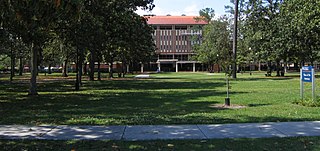
The Plaza of the Americas is a major center of student activity on the campus of the University of Florida in Gainesville, Florida. It is located in the quad between Library West, Peabody Hall, the University Auditorium, and the Chemistry Building.

Marjorie Harris Carr was an American scientist and environmental activist, well known for her conservation work in Florida. She was born in Boston and grew up in southwest Florida, where her parents taught her about native flora and fauna. After earning a Master of Science degree from the University of Florida in 1942, she went on to establish and lead several conservation efforts in the state, including co-founding the Alachua Audubon Society in 1960 and co-founding Florida Defenders of the Environment in 1969. Her work with Florida Defenders of the Environment — which continued until her death in 1997 — to preserve the Ocklawaha River Valley helped halt construction of the Cross Florida Barge Canal, which is now a public conservation and recreation area named in her honor in 1998. She was inducted in the Florida Women's Hall of Fame in 1996. She was married to herpetologist Archie Carr from 1937 until his death in 1987; they had five children.

The history of the University of Florida is firmly tied to the history of public education in the state of Florida. The University of Florida originated as several distinct institutions that were consolidated to create a single state-supported university by the Buckman Act of 1905. The oldest of these was the East Florida Seminary, one of two seminaries of higher learning established by the Florida Legislature. The East Florida Seminary opened in Ocala 1853, becoming the first state-supported institution of higher learning in the state of Florida. As it is the oldest of the modern University of Florida's predecessor institutions, the school traces its founding date to that year. The East Florida Seminary closed its Ocala campus at the outbreak of the American Civil War and reopened in Gainesville in 1866
Orange Creek is a small stream in north-central and northeast Florida, that drains Orange Lake to the Ocklawaha River. Privately owned Orange Springs provides part of the water volume.
The city of Gainesville, Florida, USA, was incorporated in 1869.





